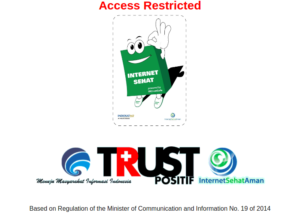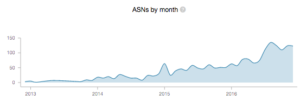Author's posts
Aug 19
OONI Partner Gathering 2017
Recently we hosted the first OONI Partner Gathering.This two day event was hosted at the University of Toronto on 10th and 11th July 2017.The event brought our international partners together to share skills, knowledge, and research findings on the study of internet censorship. It also provided us the opportunity to reflect on our collaboration over …
Jun 20
#EgyptCensors: Evidence of recent censorship events in Egypt
Starting on May 24th, the Egyptian government ordered ISPs to block at least 21 news websites on the grounds of “supporting terrorism and spreading lies”. In an attempt to understand which sites were blocked and how, ooniprobe network measurement software – designed to examine internet censorship – was run in three local vantage points in …
Jun 20
OONI – Descubriendo la censura en Internet en todo el mundo
I wrote this post about OONI in English and it was translated to Spanish.Read the post (in Spanish) here.Publisher: Oficina Antivigilancia, Coding RightsPublication date: 5th May 2017
Jun 19
The State of Internet Censorship in Indonesia
New OONI network measurement data collected from 21 local vantage points confirms the blocking of 161 websites in Indonesia between 22nd June 2016 to 1st March 2017. Indonesian ISPs appear to be implementing block pages primarily through DNS hijacking.Vimeo and Reddit were found to be blocked in some networks in Indonesia, even though their ban …
Apr 02
The State of Internet Censorship in Myanmar
Out of 1,927 sites that were tested for censorship in six local vantage points in Myanmar, only five sites presented signs of TCP/IP and HTTP blocking, including the sites of the U.S. embassy in Myanmar and of the Organization of American States (OAS). The motivation and justification behind the potential blocking of these sites remains …
Apr 02
Examining internet blackouts through public data sources
Pulling the plug on the internet is one of the ways that governments around the world attempt to exert control over the flow of information.While the Open Observatory of Network Interference (OONI) project has developed numerous software tests for examining different forms of internet censorship (such as the blocking of websites, instant messaging apps, and …
Mar 21
The State of Internet Censorship in Thailand
New OONI data reveals the blocking of 13 websites in Thailand across 6 different ISPs, between 6th November 2016 and 27th February 2017. Thai ISPs appear to primarily be implementing censorship through DNS hijacking and through the use of middle boxes (HTTP transparent proxies) which serve block pages.The blocked sites include: News outlets (nypost.com and …
Mar 12
New ooniprobe mobile app: Measure internet censorship & performance!
Today the Open Observatory of Network Interference (OONI) project is thrilled to announce the release of a new mobile app (“ooniprobe – Measure Internet Censorship & Performance”) that can now be installed on Android and iOS for testing Internet censorship and network performance.Read the post here.Publisher: Open Observatory of Network Interference (OONI)Publication date: 9th February 2017
Feb 01
Tor at the Heart: Security in-a-Box
More than ten years ago, Tactical Tech and Front Line Defenders started providing digital security trainings for human rights defenders at risk around the world. Soon thereafter, they created Security in-a-Box to supplement those trainings and to support self-learning and peer-education among those defenders.Security in-a-Box offers general advice and practical walkthroughs designed to help its …
Jan 28
Tor at the Heart: OONI Highlights from 2016
The Open Observatory of Network Interference (OONI) is a free software project under The Tor Project that aims to uncover internet censorship around the world. Recently we published an overview of OONI which can be found here.Today we are providing some OONI highlights from 2016. These include our research findings in collaboration with our partners, …






